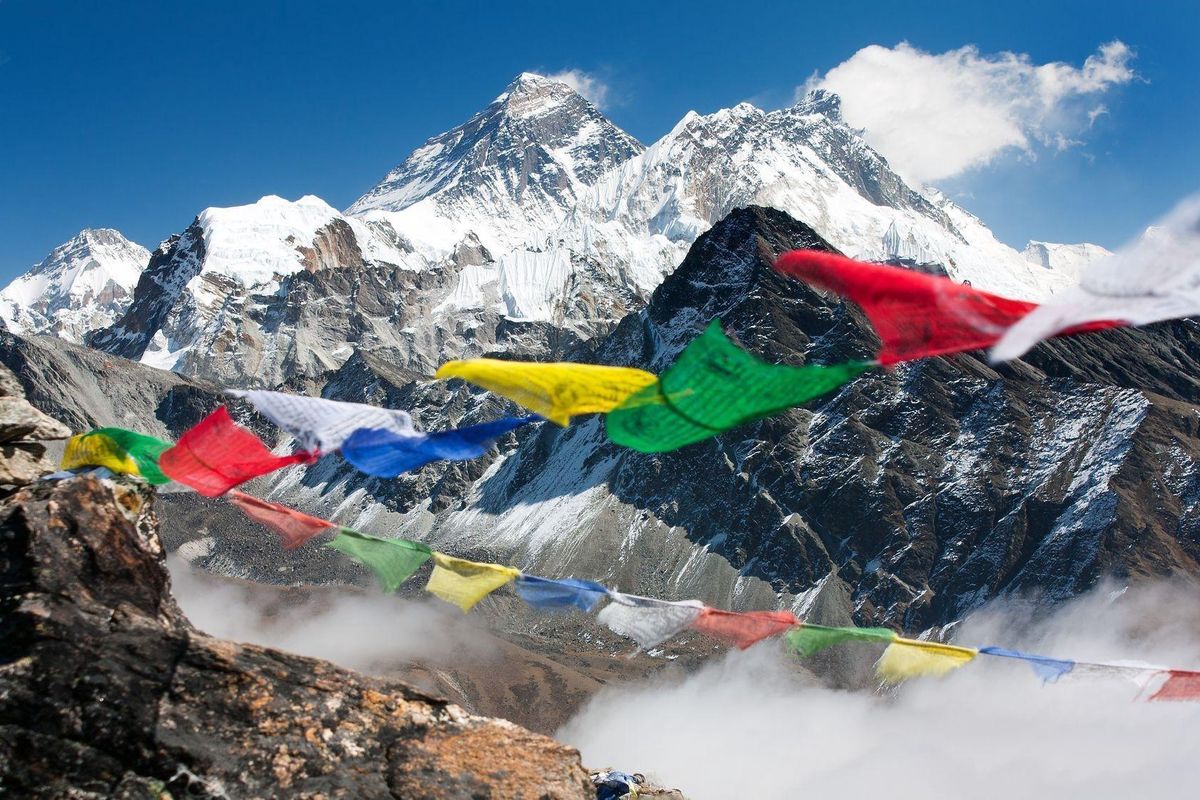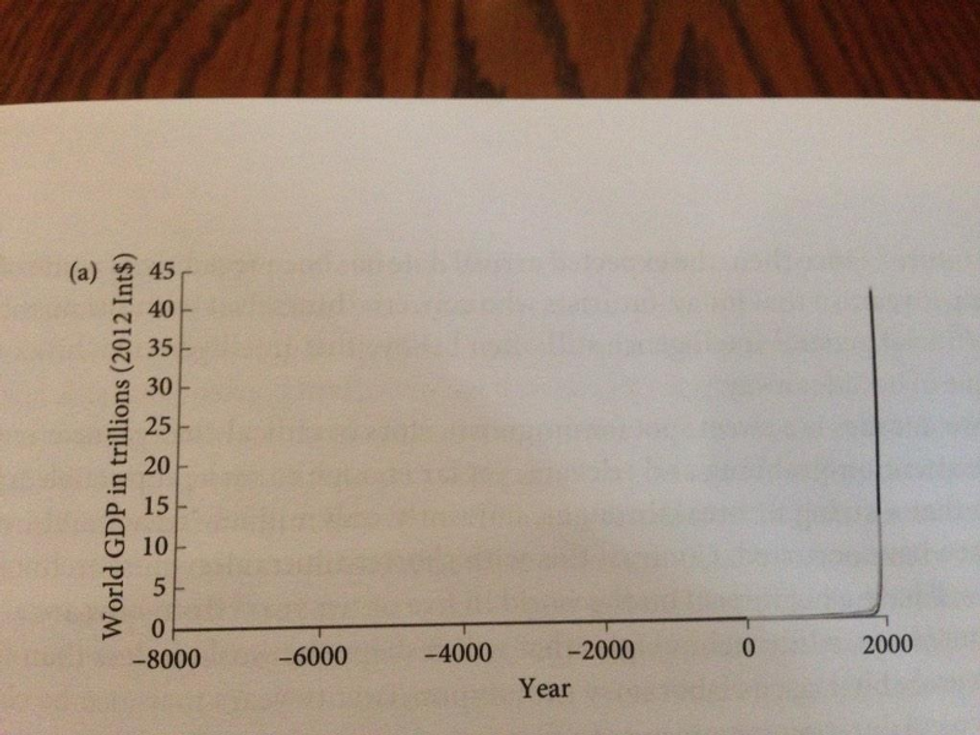
"More people meant more ideas, greater densities meant that ideas could spread more readily… These developments increased the rate of growth of economic productivity and technological." — Nick Bostrom
We are witnessing an unprecedented change in the way ideas are discovered, created, and spread. The infrastructure for ideas and content to reach audiences at speed and scale today is unlike anything we've ever seen before. Nick Bostrom illustrated the explosion in population and production beautifully in his excellent book titled "SuperIntelligence: Paths, Danger, Strategies."
What's making all this growth possible is not just how many people are alive to create and discover ideas, but population density itself. The densities are what allow for the emergence of ideas, breeding, and sorting grounds that tap the hive mind.
The internet has allowed for an explosion of population density — taking what urban offline environments started and moving it to a step growth change in density. The connections made through every major network from Facebook through to Gmail, Uber, Slack, Snapchat, Instagram, WhatsApp, and YouTube is changing how quickly we can evolve as a civilization. It is mind boggling to think of Facebook's billion daily active users, but we haven't even seen the statistic on the number of total connections between those users. The connections between users, fan Pages, and huge social accounts represent density.
Around 40% of the world population has an internet connection today. In 1995, it was less than 1%.
This has enabled a content explosion that has sent the media world into a frenzy, if not panic.
Ultimately, almost every content creator today is navigating without understanding how to traverse density, which basically amounts to "post and pray" — post to Facebook and the other networks and pray you go viral.
All of our data and focus is on the population sizes of the networks themselves. Facebook's one billion daily active users. YouTube's monthly one billion. The eight billion video views daily that Facebook has gotten too, and Snapchat's rise to seven billion. Snapchat's 100 million actives.
"Smores," BuzzFeed Food — 123M views, 2.8M shares, 1.3M likes (Facebook)
The opportunity for smart content creators is exponentially greater and faster to size and scale today. But understanding the life after publish, the way content and ideas travel through connections, is vital to building a successful business and becoming a breakout hit. There are two types of densities that need to be understood. The two terms "collective density" and "graph density" are ones we are coining here for these purposes.
Collective Density
Collective density works without any social or interest graph. YouTube, one of the largest examples of collective density, doesn't need to know who you are, where you were born, or who your friends are. It works through collective density. The property has had over 10,000 videos that have reached over one billion views. YouTube is sorted through collective density — click stats from the over a billion monthly visitors who spend an inordinate amount of time not just waiting through pre-roll, but clicking through related content and discovering. There is a small degree of interest graph built through related content modules.
"Blank Space," Taylor Swift — 1.4B views, Nov 10, 2014 (YouTube)
Media sites made a step change in growth by embracing collective density. Before stats driving popularity technology was developed and deployed, online media companies were density blind. They were just sorting content by editorial choice. But by releasing most popular units, media companies have been able to tap into collective density and let their readers quickly surface the most important stories to the groups of readers they had captured.
Collective density can add texture and complexity quickly by sorting popularity with categories of content, and adding a graph between the content to get better related content to users. This added texture allows for better increased engagement and consumption as a user begins to click twice, and then many times, to find more content.
In collective density environments, you aim for the big pop culture hit. When content finds its way to the top of the most popular units, it has the potential to reach into hundreds of millions and sometimes over billions.
Graph Density
Social networks have given rise to a new type of density based on social and interest graphs. The growth rates, and step growth rates, of the social networks are what validates so many companies' obsession and belief in understanding and spending on them. Snapchat's growth rate on video views per day, up in a year from two to seven billion views daily, is mind blowing. WhatsApp is now probably recognized nearly as equally as Coca-Cola across the developing world.
But the 600-pound gorilla of idea exchange in today's modern world is still Facebook, the property itself. No other property has so perfectly nailed the combination of a dense graph and machine learning to sort the impact of collective destiny refined through graph destiny (the stories your friends like most, e.g., your friend just got engaged, and so on). The pact with Facebook from the start was clear — this isn't reverse chronological and it isn't editorially sorted either.
"Tyrese Gibson: The Best Halloween Costume Ever," 89M views, 1.9M shares, 1.4M likes (Facebook)
Twitter's most important feature perhaps was under covered — the "While you were away..." module which appears after some hours have passed.
The struggle for Twitter's growth has perhaps been that it is limited by a different user pact based on recency, which is essentially an unsorted hive mind — the ant trail up close, each tweet marching by. I like the march myself, by the way, and I am a Twitter fan. But the growth rate has been only attached to the simple graph density without the machine-learned sorting.
Companies often miss the opportunities in this graph density because they think it doesn't apply to B2B or that they are too niche to succeed. This misses the opportunity of the graph density — it allows content to spread much faster through groups of people who are like minded or who share common interests.
The key to understanding how to accelerate the spread through graph density is to find the accounts with the largest reach and a matched interest. There are over 70 million Facebook Pages, so without technology to assist an editor, understanding this can be daunting and time consuming.
Athlete Cristiano Ronaldo's Facebook Page, 109M fans
Also, because Facebook (and many social networks) don't clearly show the stats of how content is performing that is not posted by your own Page, there is a blind spot for most editorial teams that would want to understand this but lack the tools they need to be able to.
The New Technology Layer
The emergence of the cross-platform world has become the breaking point for the technologies that media properties and marketers built or bought in the last decade. The problems they were built to solve don't match the opportunities that properties need to thrive. They cost too much and take too much time to build.
So a new generation of technologies are being built. Internally, they are collections of micro services that understand APIs natively and expect keys for data and content to flow in and out and be put into context. The role of these technologies is to help content and ideas gain momentum in the density graphs. They are moving to the cloud and becoming part of the sharing economy. And though that sometimes looks like Salesforce or the Creative Cloud, that means multi tenants host and share the costs in order to accelerate the bigger mission they are on.
The new technology layers also need to extend to domain-owned experiences where the open web tech acts as a Switzerland between the networks to understand data and create efficiencies, but also takes audiences through the funnel from casual to subscriber, and ultimately, to a core of loyalists. This allows a property to begin to build its own density. And density is ultimately what makes something valuable.
There were 255 million websites as of December 2010.
We built RebelMouse in anticipation of all these changes coming. As a result, the properties we power are growing quickly by traversing density across networks and building densities of their own with loyalists passionate about the topics they talk about.





![Best CMS for News Websites and Large-Scale Publishing [2024]](https://www.rebelmouse.com/media-library/image.png?id=51952819&width=600&height=600&quality=85&coordinates=350%2C0%2C350%2C0)












































































